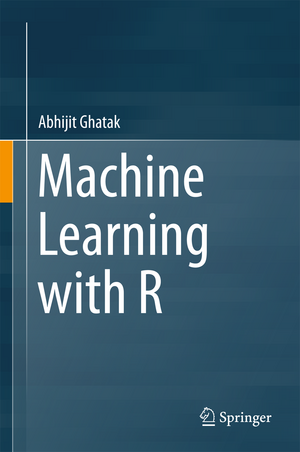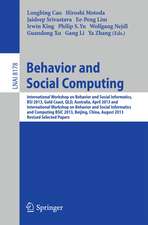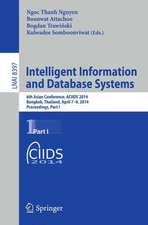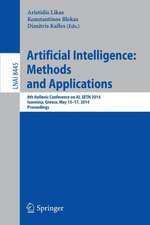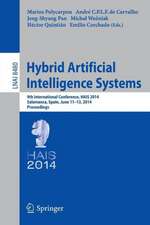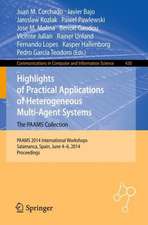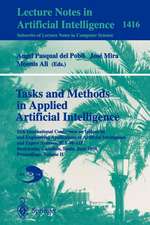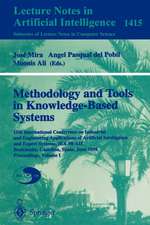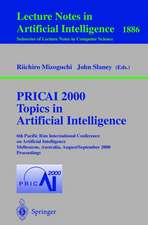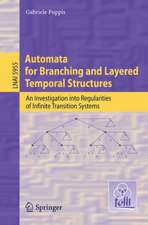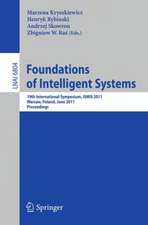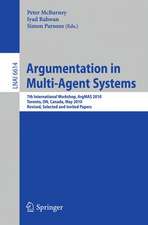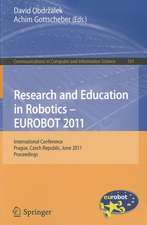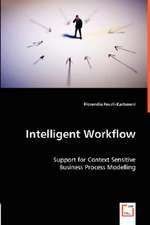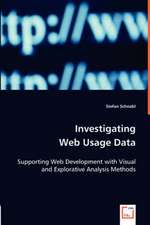Machine Learning with R
Autor Abhijit Ghataken Limba Engleză Hardback – 7 dec 2017
In turn, the second part discusses the algorithms used in supervised and unsupervised learning. It works out each learning algorithm mathematically and encodes it in R to produce customized learning applications. In the process, it touches upon the specifics of each algorithm and the science behind its formulation.
The book includes a wealth of worked-out examples along with R codes. It explains the code for each algorithm, and readerscan modify the code to suit their own needs. The book will be of interest to all researchers who intend to use R for machine learning, and those who are interested in the practical aspects of implementing learning algorithms for data analysis. Further, it will be particularly useful and informative for anyone who has struggled to relate the concepts of mathematics and statistics to machine learning.
| Toate formatele și edițiile | Preț | Express |
|---|---|---|
| Paperback (1) | 337.21 lei 38-44 zile | |
| Springer Nature Singapore – 9 dec 2018 | 337.21 lei 38-44 zile | |
| Hardback (1) | 534.73 lei 6-8 săpt. | |
| Springer Nature Singapore – 7 dec 2017 | 534.73 lei 6-8 săpt. |
Preț: 534.73 lei
Preț vechi: 668.42 lei
-20% Nou
Puncte Express: 802
Preț estimativ în valută:
102.33€ • 111.12$ • 85.96£
102.33€ • 111.12$ • 85.96£
Carte tipărită la comandă
Livrare economică 22 aprilie-06 mai
Preluare comenzi: 021 569.72.76
Specificații
ISBN-13: 9789811068072
ISBN-10: 9811068070
Pagini: 210
Ilustrații: XIX, 210 p. 56 illus.
Dimensiuni: 155 x 235 x 20 mm
Greutate: 0.5 kg
Ediția:1st ed. 2017
Editura: Springer Nature Singapore
Colecția Springer
Locul publicării:Singapore, Singapore
ISBN-10: 9811068070
Pagini: 210
Ilustrații: XIX, 210 p. 56 illus.
Dimensiuni: 155 x 235 x 20 mm
Greutate: 0.5 kg
Ediția:1st ed. 2017
Editura: Springer Nature Singapore
Colecția Springer
Locul publicării:Singapore, Singapore
Cuprins
Chapter 1. Linear Algebra, Numerical Optimization and it’s Applications in Machine Learning.- Chapter 2. Probability and Distributions.- Chapter 3.Introduction to Machine Learning.- Chapter 4. Regression.- Chapter 5. Classification.- Chapter 6. Clustering.
Notă biografică
Abhijit Ghatak is a Data Scientist and holds an ME in Engineering and MS in Data Science from Stevens Institute of Technology, USA. He started his career as a submarine engineer officer in the Indian Navy and worked on multiple data-intensive projects involving submarine operations and construction. He has worked in academia, technology companies and as a research scientist in the area of Internet of Things (IoT) and pattern recognition for the European Union (EU). He has published in the areas of engineering and machine learning and is presently a consultant in the area of pattern recognition and data analytics. His areas of research include IoT, stream analytics and design of deep learning systems.
Textul de pe ultima copertă
This book helps readers understand the mathematics of machine learning, and apply them in different situations. It is divided into two basic parts, the first of which introduces readers to the theory of linear algebra, probability, and data distributions and it’s applications to machine learning. It also includes a detailed introduction to the concepts and constraints of machine learning and what is involved in designing a learning algorithm. This part helps readers understand the mathematical and statistical aspects of machine learning.
In turn, the second part discusses the algorithms used in supervised and unsupervised learning. It works out each learning algorithm mathematically and encodes it in R to produce customized learning applications. In the process, it touches upon the specifics of each algorithm and the science behind its formulation.
The book includes a wealth of worked-out examples along with R codes. It explains the code for each algorithm, and readers can modify the code to suit their own needs. The book will be of interest to all researchers who intend to use R for machine learning, and those who are interested in the practical aspects of implementing learning algorithms for data analysis. Further, it will be particularly useful and informative for anyone who has struggled to relate the concepts of mathematics and statistics to machine learning.
The book includes a wealth of worked-out examples along with R codes. It explains the code for each algorithm, and readers can modify the code to suit their own needs. The book will be of interest to all researchers who intend to use R for machine learning, and those who are interested in the practical aspects of implementing learning algorithms for data analysis. Further, it will be particularly useful and informative for anyone who has struggled to relate the concepts of mathematics and statistics to machine learning.
Caracteristici
Help readers understand the mathematical interpretation of learning algorithms Teach the basics of linear algebra, probability, and data distributions and how they are essential in formulating a learning algorithm Help readers construct and modify their own learning algorithms, such as ridge and lasso regression, decision trees, boosted trees, k-nearest neighbors, etc Includes supplementary material: sn.pub/extras
